
GE Refrigerator Water Filter (replaces 9970, MW...
Part #MWF
Get free shipping with Automatic Reorder
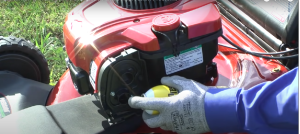

You can use starting fluid to help start a lawn mower engine but you should use it sparingly. Using starting fluid too often can damage a gasoline engine because the starting fluid heats up the engine’s cylinder to an abnormally high temperature. The manufacturer designed the engine to start using the starter cord or electric starter. Starting the mower engine using starter fluid every once in a while is okay.
You may need to use starter fluid to help your engine start the first time you use the mower in the spring. Using starter fluid also helps the engine start in cold weather. You can also use starter fluid for troubleshooting the small engine in the mower when it won’t start by pulling the starter rope.
Follow these steps to start your lawn mower with starter fluid:
Move the lawn mower to a well-ventilated area free of open flame or sparks.
Remove the air filter cover and pull out the air filter.
Spray starting fluid through the air filter housing opening to the carburetor.
Reinstall the air filter and its cover.
Pull the starter rope or push the start button to start the engine.
When your lawn mower starts only with starting fluid then stays running for only a few seconds, a fuel system problem is plaguing the engine.
Follow these troubleshooting tips to fix the problem:
Check the air filter. Pull the air filter cover and remove the air filter. If the air filter is extremely dirty and clogged with debris, clean or replace it. Follow the instructions in your owner’s manual for cleaning or replacing the air filter. Restoring good air flow through the carburetor the engine may help you engine start properly.
Look at the condition of the gasoline. Bad fuel is a common cause of engine starting problems. Contaminated gas or old gas that has absorbed water can keep a lawnmower engine from starting. Water saturated or contaminated gas doesn't ignite well. If the gas has been sitting around a while—either in the tank or in the can—drain the mower’s fuel tank and fill it with fresh, clean gas from a clean gas can. Throw away your old gas can if it’s rusted inside. Use fuel stabilizer to keep gasoline fresh and so your lawnmower starts properly.
Replace the fuel filter. If your mower has a fuel filter, replace the filter to make sure the carburetor gets an adequate flow of gas from the fuel tank. Make sure that you have the mower in a well ventilated area and that you drain the fuel tank before replacing the fuel filter. Not all mowers have a fuel filter. Check the owner’s manual for your mower or its engine for information about the fuel filter.
Check the fuel line. Look for a crack in the fuel line that could be inhibiting gas flow from the fuel tank to the carburetor. The engine will suck air through the fuel line instead of fuel if the fuel line is cracked. Replace the fuel line if it’s cracked. Also, check the fuel line for a clog. Clear or the replace the fuel line if it’s clogged with debris.
Examine the carburetor choke plate. The choke plate controls the ratio of gas and air sent to the carburetor depending on engine temperature. A cold engine needs less air to start. When the engine is cold, the choke plate should close to temporarily restrict airflow through the carburetor so more fuel can enter the cylinder. A choke plate that’s stuck open could prevent the cold engine from starting. Examine the choke plate by looking through the carburetor air inlet on the air filter base. The choke plate should be fully closed when the engine is cold. If the choke plate is open, check to see if the choke linkage is connected properly and intact. Reconnect the choke linkage if it’s disconnected. Replace the choke linkage if it’s broken or damaged.
Check the primer bulb. Some engines have a primer bulb that purges air from the fuel line and helps supply the carburetor with gas. Pressing the primer bulb a few times before starting a cold engine moves enough fuel into the carburetor so the engine starts smoothly. If the primer bulb cracks, it won’t move any fuel into the carburetor. Replace the primer bulb if it’s cracked.
Rebuild or replace the carburetor. When the above tips don’t help you fix a fuel supply problem, then you’ll likely need to rebuild or replace the carburetor. Replacing the carburetor is much easier than rebuilding it. Follow the steps in our How to replace a lawn mower carburetor repair guide/video to replace the carburetor. If you prefer to take the long route and rebuild the carburetor, follow the steps in our How to rebuild a lawn mower carburetor repair guide/video. The rebuild kit typically costs less than the carburetor but the repair is much more complicated. You'll also need carburetor cleaner when rebuilding the carburetor.
Finding a fixing a fuel system problem in your lawnmower will help you get the engine started quickly and easily.
Choose a symptom to see related walk-behind mower repairs.
Main causes: drive control cable failure, worn or broken drive belt, bad transmission, broken drive wheel…
Main causes: engine needs tune up, dirty or clogged carburetor, damaged flywheel key…
Main causes: dirty carburetor, bad spark plug, clogged air filter, engine choke problems, clogged gas cap vent…
Main causes: damaged cutting blade, loose cutting blade, damaged flywheel key, engine needs tune up…
Main causes: stale gas, engine needs tune up, bad spark plug, dead battery, bad recoil starter, faulty safety switch, ba…
Main causes: uneven wheel height settings, damaged wheel, dull or damaged cutting blade…
These step-by-step repair guides will help you safely fix what’s broken on your walk-behind lawn mower.
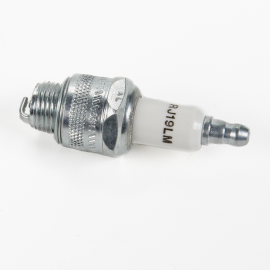
Take a few minutes to replace the spark plug during your lawn mower's annual tune-up or if the spark plug is burnt or cr…
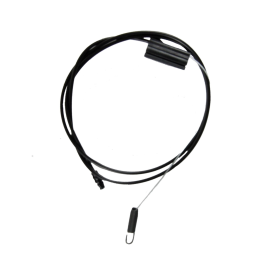
The drive cable engages the transmission to spin the drive wheels and move the mower across the grass. Replace the drive…
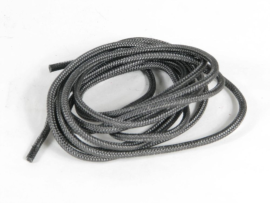
These step-by-step instructions show how to replace a broken starter pull rope on a walk-behind lawn mower.…
Use the advice and tips in these articles and videos to get the most out of your walk-behind lawn mower.
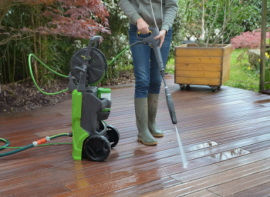
Learn about the top 10 must-have electric lawn & garden tools for 2023…

Learn about all the convenient features on our Sears PartsDirect website that make your parts purchases easier.…

Get answers to frequently asked questions about Sears and Sears PartsDirect.…